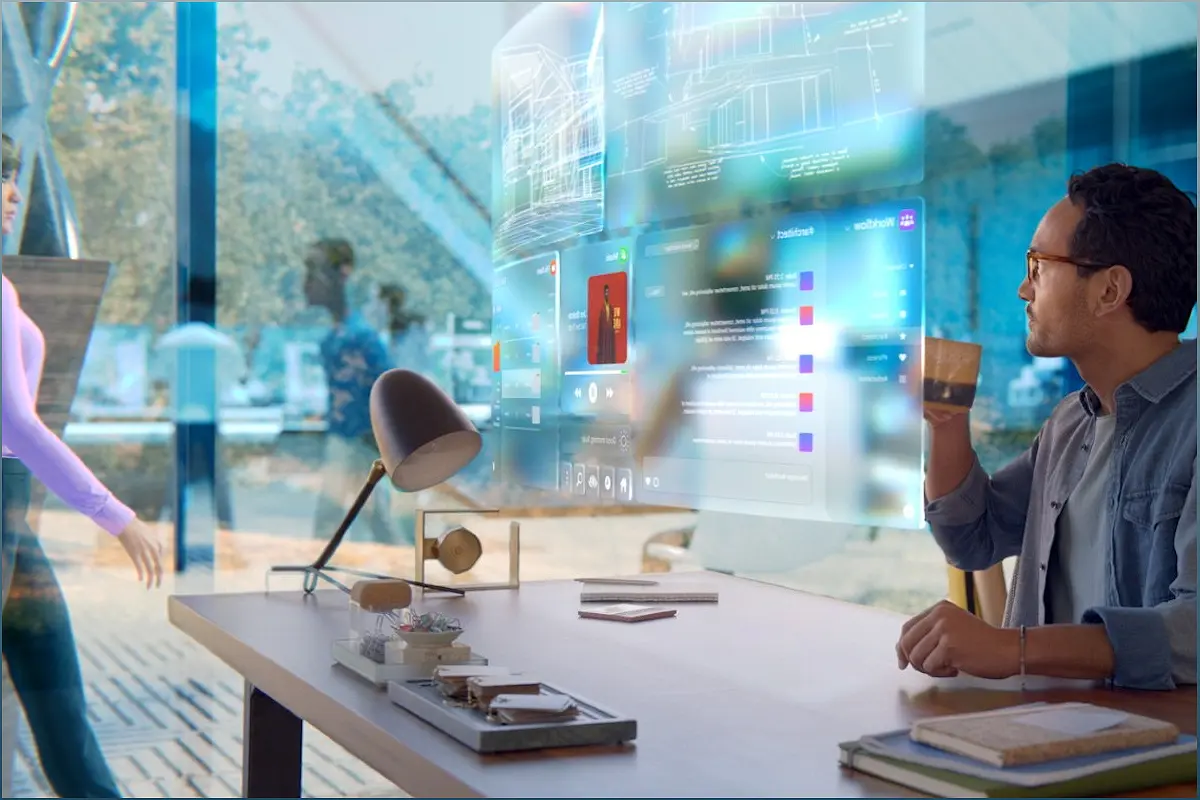In the ever-evolving world of extended reality (XR), Lenovo is taking a unique approach by focusing on the enterprise space. By collaborating with businesses, Lenovo is allowing consumers to experience XR before making a personal investment. Join me as we explore how Lenovo is revolutionizing the enterprise space, demystifying XR technology, and unlocking its potential for immersive experiences and cost-saving solutions.
XR in the Enterprise: A Game-Changer for Training and Collaboration
Discover how XR is transforming the enterprise space, revolutionizing employee training and enabling seamless collaboration.
XR technology has emerged as a game-changer for businesses, offering immersive training experiences and enabling seamless collaboration. Companies like Chick-fil-A and Walmart are leveraging XR headsets to train their employees, providing a more engaging and effective learning environment. With XR, employees can step into realistic simulations, gaining hands-on experience and improving their skills in a safe and controlled setting.
Moreover, XR is breaking down geographical barriers by facilitating remote collaboration. Teams can meet virtually in XR environments, regardless of their physical location. This fosters better communication, enhances productivity, and saves time and resources that would otherwise be spent on travel. The potential for XR in the enterprise is vast, and businesses are realizing the numerous benefits it offers.
Lenovo's Approach: Demystifying XR through Enterprise Adoption
Learn how Lenovo is leveraging enterprise partnerships to introduce users to XR technology, demystifying its capabilities and paving the way for wider adoption.
Lenovo recognizes that many consumers have yet to experience XR technology firsthand. To bridge this gap, they have focused on collaboration with businesses, allowing employees to try XR headsets at work. This approach has proven successful in demystifying XR, as users are pleasantly surprised by the immersive experiences and the deep connection they feel with the content.
By starting with XR in the enterprise, Lenovo is paving the way for wider adoption in the consumer market. Many individuals who first tried XR at work have become fans of the technology and have gone on to purchase headsets for personal use. As more content is developed and tailored to specific interests, we can expect to see a significant growth in the consumer XR market.
XR and Generative AI: Unlocking New Possibilities
Explore how the collaboration of XR and generative AI is driving innovation in the enterprise space and revolutionizing content creation.
The combination of XR and generative AI is opening up new possibilities for businesses across various industries. Generative AI technology allows companies to quickly develop proprietary XR solutions with reduced costs and faster execution times. What used to take months can now be accomplished in a matter of weeks, enabling companies to explore additional use cases and create highly customized experiences.
Not only does generative AI streamline content creation, but it also empowers traditional game developers, XR developers, and consumer developers. By unlocking the potential of generative AI, developers can overcome previous limitations and create games, XR applications, and other experiences that resonate with end users. This convergence of XR and generative AI is driving innovation and shaping the future of the industry.
The Future of XR: Towards Lighter, More Accessible Devices
Discover the future of XR technology, as Lenovo envisions lighter and more accessible devices that will revolutionize how we experience immersive content.
The evolution of XR technology is reminiscent of the trajectory of televisions and portable phones. Just as these devices started as large and bulky, XR headsets are currently in a similar phase. However, as XR gains more content and faster methods of production, we can expect to see smaller, more efficient devices that offer a truly immersive and enjoyable experience.
Lenovo believes that we are not far from a future where XR devices are lightweight and easy to use. Imagine putting on a pair of glasses and feeling like you're sitting right next to someone, engaging in interactive and enjoyable experiences. As generative AI continues to advance and content becomes more accessible, XR technology will become an integral part of our daily lives, transforming how we work, learn, and entertain ourselves.
Conclusion
XR technology is revolutionizing the enterprise space, offering immersive training experiences and enabling seamless collaboration. Lenovo's approach of introducing XR through enterprise partnerships has been successful in demystifying the technology and driving wider adoption. The collaboration of XR and generative AI is unlocking new possibilities and driving innovation in content creation. As XR devices become lighter and more accessible, we can expect a future where immersive experiences are seamlessly integrated into our daily lives.
FQA
What industries can benefit from XR technology?
XR technology has applications across various industries, including training, healthcare, architecture, entertainment, and more. It can be used for employee training, virtual simulations, remote collaboration, and creating immersive experiences.
How is XR technology transforming employee training?
XR technology provides a more engaging and effective learning environment for employee training. It allows employees to step into realistic simulations, gaining hands-on experience and improving their skills in a safe and controlled setting.
What is the role of generative AI in XR?
Generative AI technology enables companies to quickly develop proprietary XR solutions with reduced costs and faster execution times. It empowers developers to create highly customized experiences and overcome previous limitations in content creation.
What can we expect from the future of XR technology?
In the future, XR devices will become lighter, more accessible, and seamlessly integrated into our daily lives. We can expect immersive experiences that rival reality, transforming how we work, learn, and entertain ourselves.

